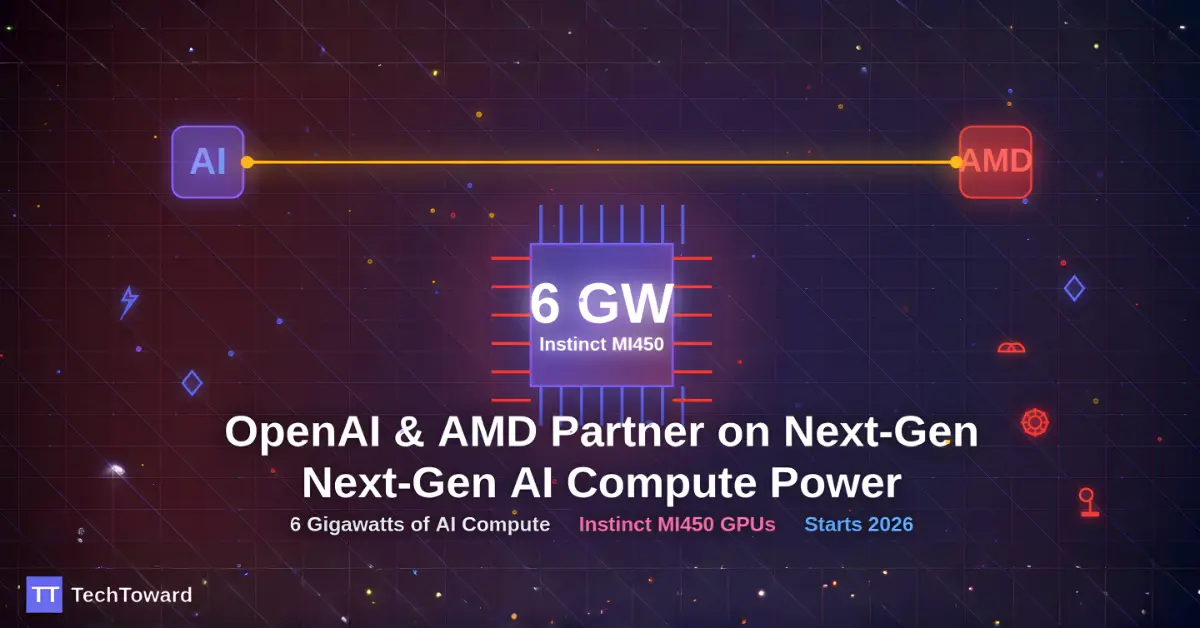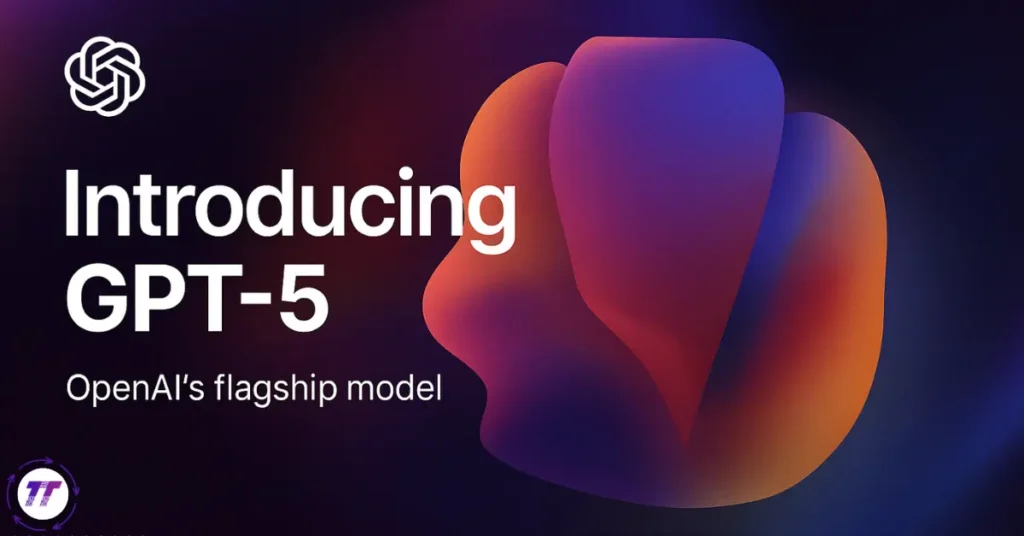Summary:
OpenAI and AMD have entered a strategic multi-year agreement under which AMD will supply up to 6 gigawatts of AI compute, beginning with 1 GW deployment in 2026. This deal could shift the balance in AI hardware and provide OpenAI greater flexibility.
Why This Partnership Is Big
When you hear “OpenAI & AMD partner,” it sounds like a tech dream team — and in many ways, it is. AMD, known for high-performance graphics and compute, will now become a core supplier to OpenAI’s AI infrastructure. Together, they aim to deliver unprecedented scale in compute power, meaning faster, more advanced AI models for everyone.
This partnership may seem complex, but it’s actually a clear step toward solving one of AI’s biggest bottlenecks: access to massive compute. In this article, we’ll break down exactly what’s happening, why it matters, the challenges ahead, and what to watch next.
What the New Partnership Is
a. AMD Supplying AI Chips to OpenAI
AMD will provide compute capacity via its Instinct GPU line under a multi-generation agreement. The total commitment is 6 GW (gigawatts) of compute power.
- The first 1 GW is slated for deployment beginning in the second half of 2026.
- AMD’s press release states this will involve AMD Instinct MI450 GPUs and deeper collaboration on hardware/software co-design.
b. Why This Matters for AI Infrastructure
- Scale matters: AI models require vast computational resources. This partnership gives OpenAI a guaranteed path to large-scale deployment.
- Diversification: Currently, many AI companies rely heavily on Nvidia. This deal gives OpenAI more flexibility in sourcing compute.
- Strategic alignment: Through warrants, OpenAI may gain up to 10% stake in AMD if milestones are met.
What the Deal Covers
Amount of Compute & Timeline
- 6 GW total compute over multiple years.
- 1 GW planned for initial deployment starting 2H 2026.
Chips Involved
- The deal will use AMD Instinct MI450 GPUs to fulfill compute needs.
- AMD and OpenAI will jointly optimize software stacks to get maximum performance from hardware.
Strategic Elements
- Warrants & equity: AMD has issued warrants for 160 million shares for OpenAI, vesting with milestones.
- Multi-generation roadmap: This isn’t a one-off — future GPU generations will also be involved.
Why This Partnership Is Significant
Diversification From Nvidia
OpenAI has traditionally leaned on Nvidia’s GPUs for much of its compute. This AMD deal gives them alternative compute options, reducing dependency.
Strengthening AMD’s Role in AI Hardware
AMD has long competed in AI and compute markets, but this deal signals it is being taken seriously as a core AI compute player. This could accelerate its innovation and influence in AI systems.
Implications for Future AI Models & Infrastructure Demand
With guaranteed compute, OpenAI can plan more ambitious models. This also pushes the industry to evolve around massive compute costs, efficiency, and hardware-software co-design.
Step-by-Step Timeline (What to Watch For)
| Phase | What Happens | Timeframe / Indicator |
| Contract signing | The agreement is confirmed, terms outlined | October 2025 (already public) |
| First deployment | 1 GW rollout of MI450 GPUs | 2H 2026 |
| Scale-up | Full 6 GW deployment over years | Over multiple years ahead |
| Warrant vesting | OpenAI claims shares if conditions met | As deployment and performance milestones pass |
Real-World Analogy
Think of AI chips like engines in a racecar. OpenAI builds the software (the car’s behavior), but AMD provides the engines (compute power). This partnership is like two top teams combining to build a racecar that can outrun competitors. Without powerful engines, even the best software can’t compete.
Technical & Strategic Challenges
Scaling Across Data Centers
Transitioning compute designs into tens or hundreds of data centers is nontrivial: cooling, power, networking, and maintenance must be managed at scale.
Compatibility & Software Optimization
Chips alone aren’t enough. The software stack (drivers, frameworks, infrastructure) must be tuned to use the hardware fully.
Risk Factors
- Supply chain constraints: Manufacturing at this scale has risks of delays, yield problems.
- Cost efficiency: The economics must balance cost vs performance.
- Competition & obsolescence: Newer architectures or competitors may erode advantage.
Wider Impacts & What to Expect
Effects on AI Research & Commercial Use
More compute can unlock next-gen models — larger, more context-aware, real-time AI applications.
Reaction From Other Players
Nvidia, Intel, and chip startups will respond. This may force more partnerships or price competition in the AI hardware world.
Long-Term Vision for Compute in AI
We might see compute infrastructure as a service become more modular, diversified, and resilient. Projects may design models around available compute.
FAQs
Q: What is OpenAI’s chip partnership with AMD?
A: AMD will supply up to 6 GW of compute to support OpenAI’s AI infrastructure, starting with 1 GW in 2026.
Q: When will this AMD–OpenAI deal first deploy?
A: The first deployment is expected in the second half of 2026.
Q: Which chip model is involved?
A: The AMD Instinct MI450 GPU series.
Q: How big is 6 GW in AI compute terms?
A: It’s massive — to put in perspective, this is hundreds of thousands of GPUs operating in high-performance data centers.
Q: Will AMD replace Nvidia in OpenAI’s lineup?
A: Not immediately. OpenAI retains ties with Nvidia, but AMD now becomes a major alternative.
Conclusion & What You Should Watch
In short, the OpenAI–AMD partnership is more than a supply deal — it’s a strategic shift in how AI compute will be sourced and scaled. This could change the competitive dynamics in the AI hardware and software space.
What to Watch:
- Actual delivery of the 1 GW deployment in 2026
- Benchmark results from MI450 in real-world AI workloads
- How OpenAI and AMD integrate further across future generations
Want to stay ahead in AI tech? Subscribe for updates on OpenAI, AMD, and AI compute innovation. We’ll bring deep dives, benchmark reviews, and future reveals as they unfold.


